Batiste fabric is a lightweight, plain weave material known for its soft texture and sheer appearance. It is made from various fibers, including cotton, wool, polyester, and linen, making it a versatile fabric in the textile industry.
This article will delve into the intricacies of batiste fabric, covering its history, types, uses, and care instructions.
What is Batiste Fabric

Batiste fabric is a lightweight and sheer material known for its softness and smooth texture. It originated in the medieval period and was named after Jean Baptiste, a French weaver. Initially made from linen, batiste fabric has evolved over time to include various fibers such as cotton, wool, polyester, and linen.
Types of Batiste Fabric
There are different types of batiste fabric:
- Cotton Batiste: Soft and breathable, ideal for summer clothing and delicate garments like baby clothes.
- Linen Batiste: Retains durability and crispness, often used in high-end garments and home textiles.
- Wool Batiste: Provides warmth and lightweight properties, suitable for winter clothing.
- Polyester Batiste: Offers ease of care and resistance to wrinkles, popular for casual wear and home textiles.
Batiste fabric is characterized by its plain weave, creating a smooth surface and slightly sheer appearance. It is lightweight, typically ranging from 60 to 100 grams per square meter, and can be used in various applications:
- Fashion Industry: Used for making blouses, dresses, lingerie, scarves, and handkerchiefs.
- Home Textiles: Popular for pillowcases, bed linens, curtains, and quilting.
- Crafts and Hobbies: Favoured for embroidery and quilting due to its fine weave and smooth texture.
Benefits of batiste fabric include comfort, breathability, versatility, and aesthetic appeal. However, it also has some limitations, such as durability, maintenance requirements, and cost.
Recent innovations in batiste fabric include eco-friendly options made from organic cotton or recycled fibers, as well as high-tech fabrics with enhanced properties like moisture-wicking and UV protection.
What Type of Fabric is Batiste
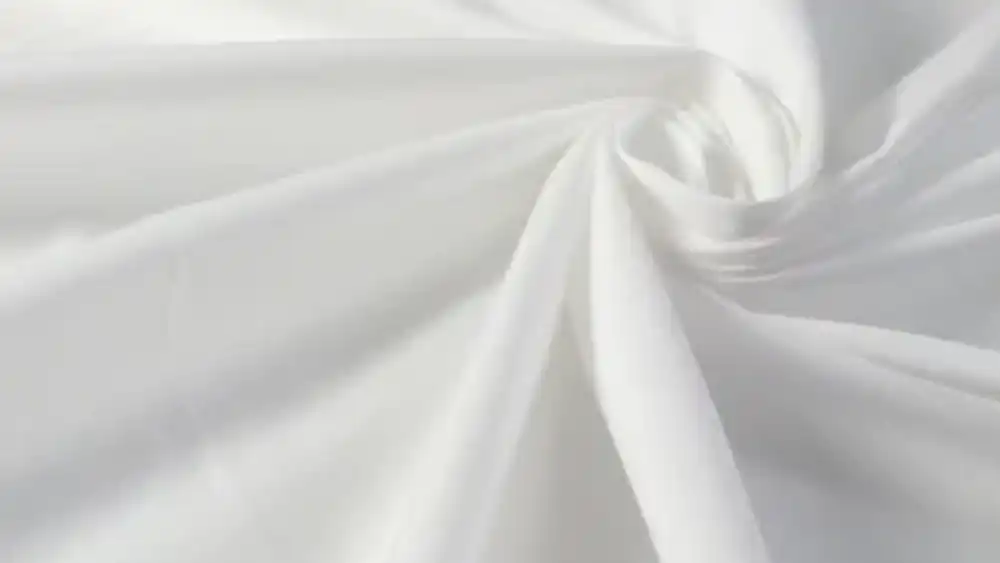
Batiste fabric is a type of textile renowned for its lightweight and sheer qualities, making it exceptionally soft and delicate. It belongs to the family of plain weave fabrics, which means the yarns are woven in a simple over-and-under pattern. This basic weave structure results in a smooth surface with minimal texture, lending batiste its characteristic softness.
One of the defining features of batiste is its translucency. While it is not completely transparent, batiste fabric has a subtle sheerness that allows light to pass through, giving it an airy and ethereal appearance. This makes it particularly well-suited for garments and textiles where a light and delicate touch is desired.
Batiste fabric can be crafted from a variety of fibers, each imparting its own unique characteristics to the finished material:
- Cotton Batiste: Made from cotton fibers, this type of batiste is prized for its breathability, softness, and absorbency. It is often used for summer clothing and undergarments due to its lightweight nature and comfortable feel against the skin.
- Linen Batiste: Linen batiste retains the crispness and durability of linen fibers while also offering a soft and smooth texture. It is favored for high-end garments and home textiles, adding a touch of luxury to bedding, curtains, and apparel.
- Wool Batiste: Although less common, wool batiste provides warmth and insulation while remaining lightweight and breathable. It is often used in winter clothing where a delicate fabric with thermal properties is desired.
- Polyester Batiste: Polyester batiste is valued for its durability, wrinkle resistance, and ease of care. It offers similar qualities to natural fiber batiste but with added durability and longevity, making it suitable for everyday clothing and home textiles.
Regardless of the fiber used, batiste fabric is known for its fine weave and smooth finish, making it an ideal choice for clothing, accessories, home décor, and crafting projects where a lightweight and soft material is desired.
What is Batiste Fabric Used For
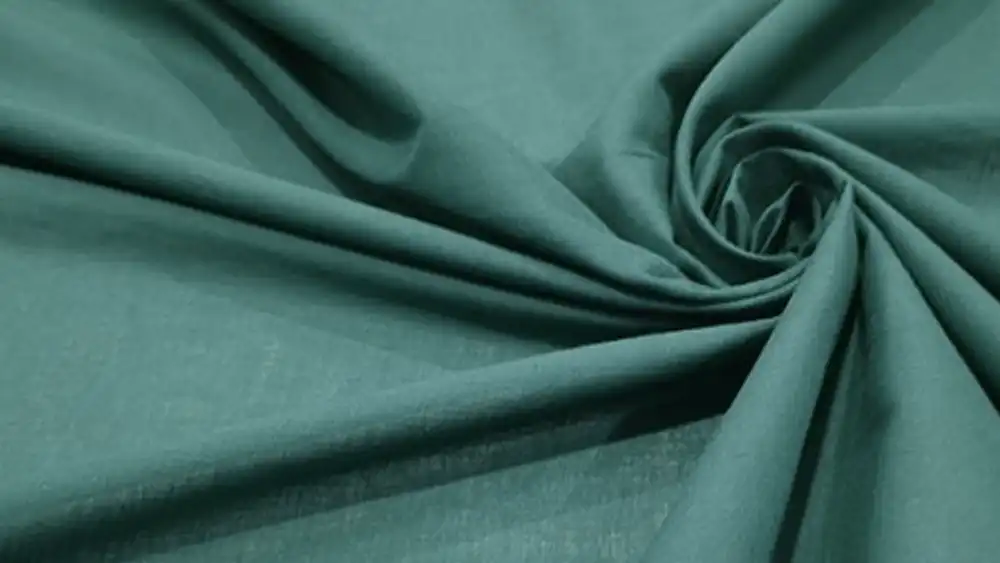
Batiste fabric is used for a variety of applications due to its lightweight, soft, and smooth characteristics. Here are some of its primary uses:
Clothing:
- Blouses and Dresses: Batiste’s soft texture and breathability make it ideal for lightweight blouses and summer dresses.
- Lingerie and Underwear: The fabric’s gentle feel against the skin makes it a popular choice for lingerie and undergarments.
- Baby Clothes: Batiste is often used for baby clothing due to its softness and comfort.
- Nightwear: It is also used for making nightgowns and pajamas, providing a comfortable and breathable option for sleepwear.
Home Textiles:
- Bed Linens: Batiste is commonly used for pillowcases, bed sheets, and duvet covers, offering a soft and luxurious feel.
- Curtains and Drapes: Its sheer quality allows light to filter through while adding an elegant touch to home décor.
- Table Linens: The fabric is also used for making delicate tablecloths and napkins.
Crafts and Hobbies:
- Embroidery: Batiste’s fine weave makes it a favorite for hand embroidery and needlework projects.
- Quilting: The smooth texture and lightweight nature of batiste make it suitable for quilting.
Fashion Accessories:
- Scarves: The light and airy quality of batiste fabric makes it perfect for scarves and other fashion accessories.
- Handkerchiefs: Batiste is often used for handkerchiefs due to its softness and absorbency.
Specialty Uses:
- Christening Gowns: The fabric’s delicate and elegant appearance makes it a popular choice for christening gowns and other special occasion outfits.
- Historical and Period Costumes: Batiste is frequently used in the creation of historical and period costumes, providing an authentic look and feel.
Batiste fabric’s versatility and appealing qualities make it a favored material in both fashion and home textile applications.
What Are the Advantages of Batiste Fabric
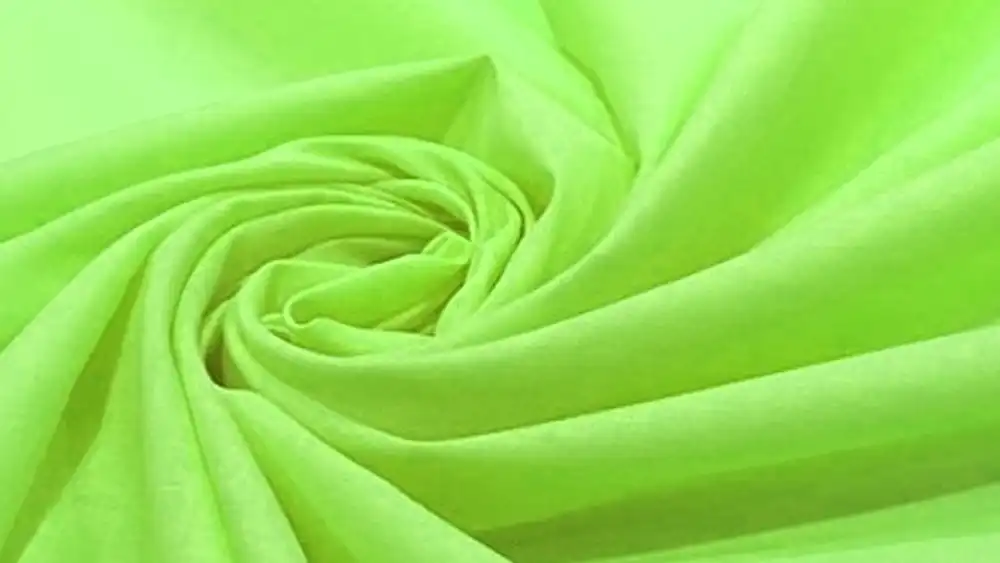
Batiste fabric offers several advantages, making it a popular choice for a variety of applications:
- Softness: One of the most notable advantages of batiste fabric is its exceptional softness. Regardless of the fiber used, batiste has a gentle and smooth texture that feels luxurious against the skin, making it ideal for clothing, lingerie, and bedding.
- Lightweight: Batiste is incredibly lightweight, which enhances its comfort and breathability. It drapes beautifully and flows gracefully, allowing for ease of movement and making it perfect for summer clothing and airy home textiles like curtains and drapes.
- Breathability: Due to its fine weave and lightweight nature, batiste fabric is highly breathable. It allows air to circulate freely, helping to keep the body cool and comfortable in warm weather conditions. This makes it a preferred choice for summer apparel and bedding.
- Versatility: Batiste fabric is incredibly versatile and can be made from various fibers such as cotton, linen, wool, or polyester. This versatility allows it to be used in a wide range of applications, including clothing, accessories, home textiles, and crafts.
- Sheerness: Batiste fabric has a subtle sheerness that adds an elegant and delicate touch to garments and textiles. It allows light to filter through, creating a soft and ethereal appearance that is both visually appealing and flattering.
- Absorbency: Fabrics made from natural fibers like cotton and linen batiste have excellent absorbent properties, making them ideal for clothing items like shirts, blouses, and undergarments. They can absorb moisture from the skin, keeping the wearer dry and comfortable.
- Easy Care: Batiste fabric is generally easy to care for, especially when made from synthetic fibers like polyester. It is often machine washable and quick-drying, requiring minimal ironing or maintenance.
- Elegance: The sheer and smooth texture of batiste fabric adds an elegant and refined look to garments and home textiles. It drapes beautifully and lends a touch of sophistication to any design.
The advantages of batiste fabric—including its softness, lightweight nature, breathability, versatility, sheerness, absorbency, easy care, and elegance—make it a popular choice for a wide range of clothing, home décor, and crafting projects.
What is the Difference Between Batiste and Voile
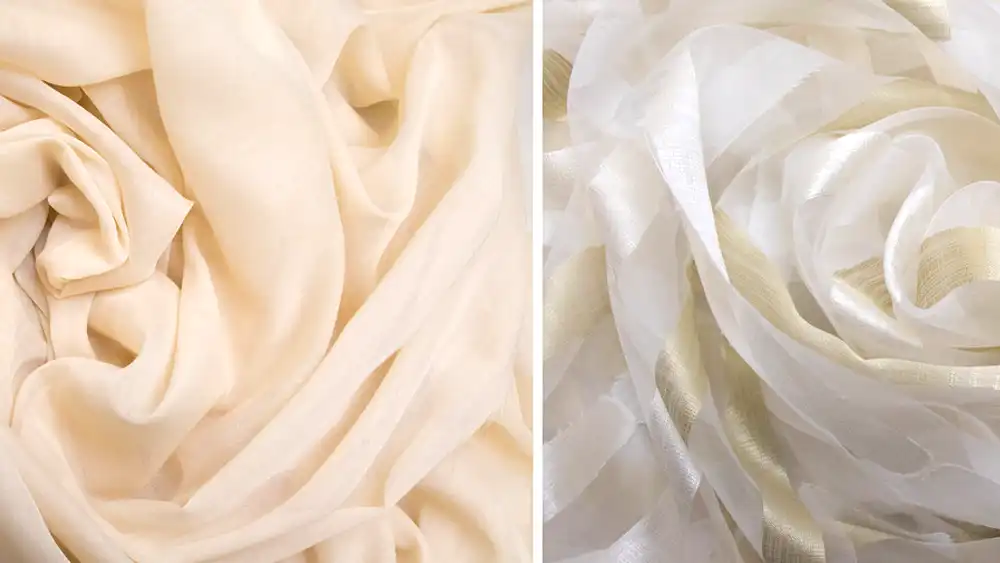
Batiste and voile are both lightweight, sheer fabrics used in clothing and home textiles, but they have some distinct differences:
Weave Structure:
- Batiste: Batiste fabric typically features a plain weave, where the warp and weft threads interlace evenly to create a smooth surface. This results in a fabric with a slightly sheer appearance and a soft, delicate texture.
- Voile: Voile also has a plain weave structure, but it is usually woven with a tighter tension, resulting in a denser fabric with a more crisp feel. This gives voile a slightly stiffer drape compared to batiste.
Weight and Thickness:
- Batiste: Batiste fabric tends to be lightweight with a moderate thickness, making it suitable for a variety of garments and home textiles. It is often used for summer clothing and delicate curtains.
- Voile: Voile is typically lighter and more transparent than batiste. It has a gossamer-like quality with a finer texture, making it ideal for airy curtains, scarves, and lightweight apparel.
Texture and Hand Feel:
- Batiste: Batiste has a soft and smooth texture with a gentle drape. It feels luxurious against the skin and has a subtle sheerness that adds elegance to garments and textiles.
- Voile: Voile has a crisp and slightly stiff texture, especially when compared to batiste. It has a firmer hand feel and may require additional finishing to achieve a softer drape.
End Use:
- Batiste: Batiste fabric is commonly used for a variety of clothing items, including blouses, dresses, lingerie, and baby clothes. It is also favored for lightweight curtains, bed linens, and crafting projects.
- Voile: Voile is often used for curtains and window treatments, where its sheer quality allows light to filter through while maintaining privacy. It is also used for lightweight scarves, shawls, and summer apparel.
While both batiste and voile are lightweight and sheer fabrics with plain weave structures, batiste tends to be slightly thicker and softer with a more delicate texture, while voile is finer, lighter, and crisper in feel. The choice between the two depends on the desired look, feel, and application of the fabric.
What is the Difference Between Cambric and Batiste
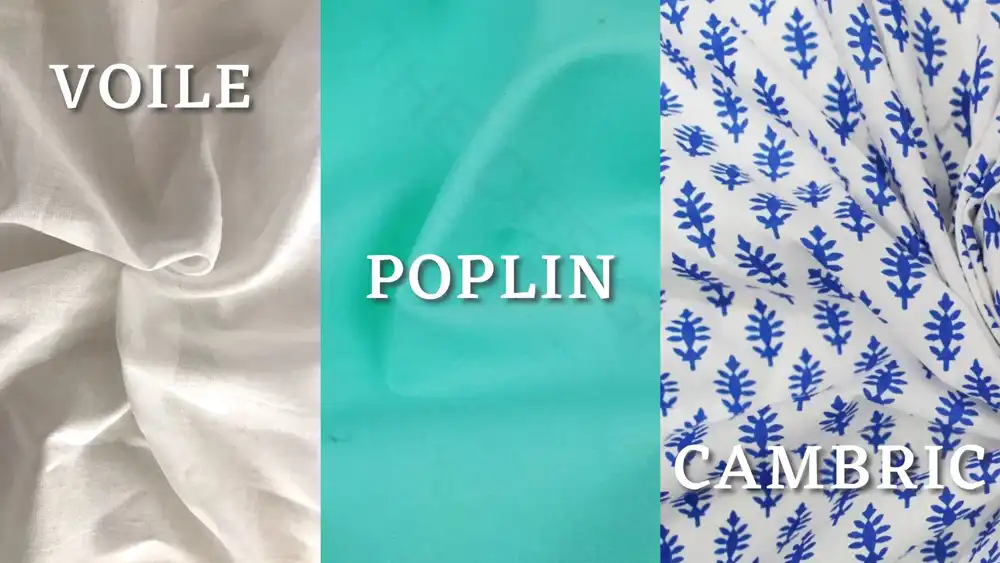
While both batiste and cambric are lightweight, plain-weave fabrics known for their soft texture, they do have some distinct differences:
Origin:
- Batiste: The term “batiste” originated in France, and it is commonly associated with fine, sheer fabrics made from various fibers such as cotton, linen, wool, or polyester. Batiste is prized for its delicate texture and softness.
- Cambric: Cambric fabric derives its name from Cambrai, a city in France where it was first produced. Historically, cambric was exclusively made from linen fibers, but it is now also made from cotton. Cambric is known for its smooth surface and crisp texture.
Texture:
- Batiste: Batiste fabric has a soft and smooth texture with a subtle sheerness. It drapes beautifully and feels luxurious against the skin.
- Cambric: Cambric fabric has a slightly firmer texture compared to batiste. It is known for its crispness and stiffness, especially when made from linen fibers.
Fiber Content:
- Batiste: Batiste can be made from various fibers, including cotton, linen, wool, or polyester. The choice of fiber can influence the fabric’s texture and characteristics.
- Cambric: Traditionally, cambric was made exclusively from linen fibers. However, modern cambric can also be made from cotton, offering a softer and more lightweight alternative.
Finishing:
- Batiste: Batiste fabric may undergo different finishing techniques to enhance its softness, drape, and sheerness. It can be dyed, printed, or treated to achieve specific aesthetic effects.
- Cambric: Cambric fabric is typically finished with a smoother surface and a tighter weave compared to batiste. It is often used for clothing items that require a more structured and tailored look.
While both batiste and cambric are lightweight, plain-weave fabrics with soft textures, they differ in their origin, texture, fiber content, and finishing techniques. While batiste is known for its delicate and sheer qualities, cambric is prized for its crispness and stiffness.
Does Batiste Fabric Wrinkle?
Yes, batiste fabric can wrinkle, especially if it is made from natural fibers like cotton or linen. While batiste is known for its softness and lightweight nature, it may still develop wrinkles, particularly when folded or creased during wear or storage.
However, the degree to which batiste fabric wrinkles can vary depending on several factors:
- Fiber Content: Fabrics made from natural fibers like cotton and linen tend to wrinkle more easily than those made from synthetic fibers like polyester. Cotton and linen batiste may require more frequent ironing to maintain a smooth appearance.
- Weave Density: The tightness of the weave can affect how prone the fabric is to wrinkling. Batiste with a looser weave may be more susceptible to wrinkles compared to those with a tighter weave.
- Finishing Techniques: Some batiste fabrics may undergo special finishing treatments to reduce wrinkling and improve crease resistance. These treatments can help the fabric retain its smooth appearance for longer periods between ironing.
- Care and Maintenance: Proper care and storage can also impact the wrinkling of batiste fabric. Avoiding overcrowding in the closet, hanging garments properly, and using gentle washing and drying methods can help minimize wrinkles.
Is It Safe to Use Batiste
Yes, batiste fabric is generally considered safe to use for a wide range of applications, including clothing, bedding, curtains, and crafts. Here are a few reasons why batiste is considered safe:
- Non-Toxic Materials: Batiste fabric is typically made from natural or synthetic fibers that are safe for human use. Natural fibers like cotton and linen are biodegradable and free from harmful chemicals, while synthetic fibers like polyester undergo rigorous testing to ensure they meet safety standards.
- Skin-Friendly: Batiste fabric is known for its softness and comfort against the skin. Fabrics made from natural fibers like cotton and linen are breathable and hypoallergenic, making them suitable for sensitive skin types.
- Regulated Production: The production of batiste fabric is subject to strict regulations and quality control measures to ensure safety and compliance with industry standards. Manufacturers must adhere to guidelines regarding fiber content, dyeing processes, and finishing treatments.
- Care Instructions: Proper care and maintenance of batiste fabric can help ensure its safety and longevity. Following recommended washing, drying, and ironing instructions can help minimize any potential risks associated with the fabric.
- Certifications: Some batiste fabrics may carry certifications or labels indicating that they have been tested for safety and quality by independent organizations. These certifications provide reassurance to consumers regarding the safety of the fabric.
Batiste fabric is considered safe for use in various applications, but it’s always essential to follow care instructions and use products responsibly to minimize any potential risks. If you have specific concerns or sensitivities, it’s advisable to choose batiste fabrics made from natural fibers and to consult with healthcare professionals if needed.
Conclusion
Batiste fabric is a versatile and elegant material with a rich history and a wide range of applications. Its soft texture, breathability, and aesthetic appeal make it a favorite in both the fashion and home textile industries. Despite its challenges, innovations in textile technology and eco-friendly production methods promise a bright future for batiste fabric.
